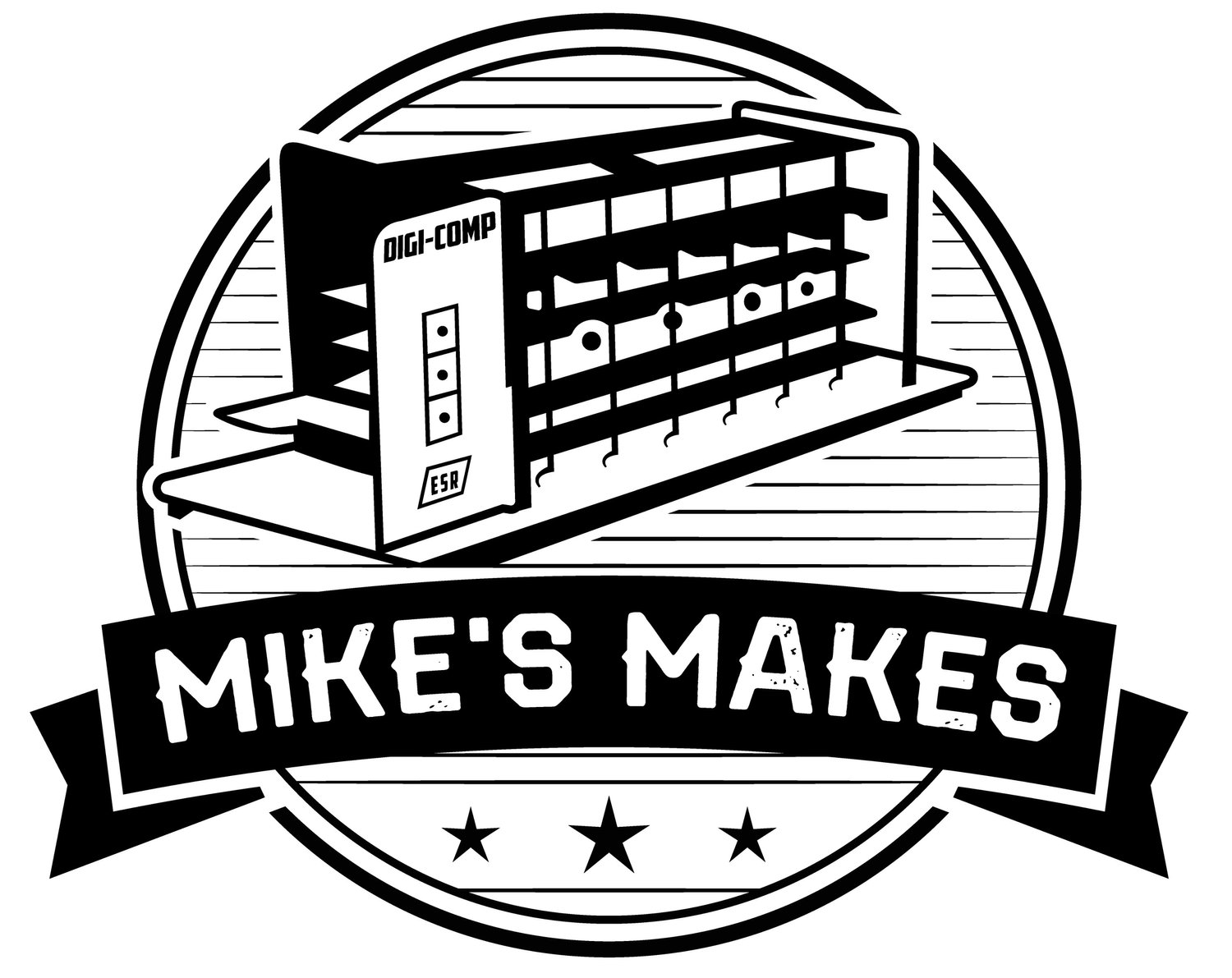WDC-1 a “Working Digital Computer”
My completed WDC-1. Front row: Program storage drum, Instruction decoder. Back row: ALU, Decimal to binary encoder, Core memory, BCD to decimal decoder, Binary to BCD converter.
Published By: Hayden Book Company, Inc.
Written By: Edward Alcosser, James P. Phillips, and Allen M. Wolk
Copyright: 1967, 1968
I discovered a book published in 1968 entitled "How to Build a Working Digital Computer" by Edward Alcosser, James P. Phillips, and Allen M. Wolk. Believers in the "learn by doing" philosophy, they show how to construct such a computer using "simple inexpensive components usually found around the house or in a neighborhood electrical parts store". This is often called the "paperclip computer" book since they use paperclips to create switches throughout the design.
There have been a few implementations based on the book over the years. This project was an effort to make my own version of a "Working Digital Computer" henceforth to be called WDC-1. From the beginning my intent was to use period technologies but modern building techniques like 3D printing and PCB fabrication. I did not use any paperclips for this build.
When I was researching this project I happened upon the following article Building a 4-Bit Computer: Relay Based Hardware Accelerators by Max Maxfield. This and it's associated articles were very interesting and informative. At one point Max and his collaborator Joe Farr talk about implementing the computer: "...the idea is that we will have a series of glass-fronted wooden cabinets mounted on the wall. One will contain the Clock Generator, another will contain the CPU, and yet another will contain a Programmer’s Console...", much like the Working Digital Computer's component design I thought. The part that really caught my interest was:
"The fun thing is that the contents of each cabinet will be realized using different implementation technologies, including relays, vacuum tubes, transistors, jelly bean 74-series logic chips, magnetic logic, pneumatic logic, fluidic logic… we are limited only by our imaginations."
That did sound like fun so I decided that this is what I would do as well. I implemented the ALU with relays, the binary to decimal decoders with 7400 series logic chips, made a mechanical decimal to binary encoder, and implemented a binary to BCD converter with an Arduino Nano.
I don't remember being aware of "How to Build a Working Digital Computer" as a kid, but I'm pretty sure that the 14 year old me, who was making tic-tac-toe machines with homemade relays at the time the book was published, would have been all over it. So the first and foremost reason that I built WDC-1 was as a gift to that kid that still lives inside me someplace. [Thanks future me!]
Edward Alcosser, James P. Phillips, and Allen M. Wolk were pioneers for their time. They helped to teach a generation of young people about "Computers" at a time when access to a real 60s era computer was out of the question for the average person. It certainly had an effect on Mark Rosenstein and Kenneth Antonelli, two high school students, who in 1975 built a working digital computer they named "Emmerack" based on the book. I'm sure there were many others, some of whom would go on to help usher in the age of the personal computer as we know it.
While my build wasn't strictly "by-the-book", I believe it still embodies both the concept and spirit of the original. This is especially true of the mechanical encoders that I used based on their very clever "spool" design. I think that someone would have little trouble running the programs from the book on WDC-1. Furthermore I hope that the updated build will help to demonstrate other technologies available in the 60s era like relay based computing and 7400 series logic circuits.
With thanks to Bob Roswell curator of the System Source Computer Museum I'm proud to announce that my WDC-1 will be on permanent display at the museum.
WDC-1 is on the middle shelf, to the right of a CT-650, which was a commercial version of the working digital computer built from the same book. The tablet on the far right is looping the video that I made of WDC-1 in action (which in hindsight I should have put a little more effort into - sigh).
In the same picture you can see six other devices that I have made reproductions of. I'm in good company there. I'm honored.







